Popular games for platform Commodore C64/128/MAX
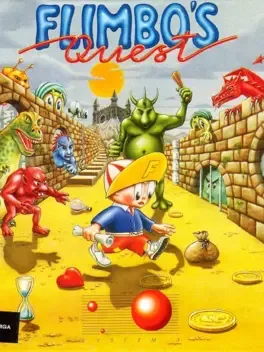
Rescuing girlfriends is a pretty common challenge in older computer games - why can't any of these ladies look after themselves? On this occasion Pearly has been kidnapped by Fransz Dandruff, so better make sure he's hair today, gone tomorrow. The gameplay is platform based, although the player may move down platforms as well as up to the next one. There are lots of baddies (drawn in a cutesy style) who need shooting and offer rewards. The seven levels are fairly short and linear.
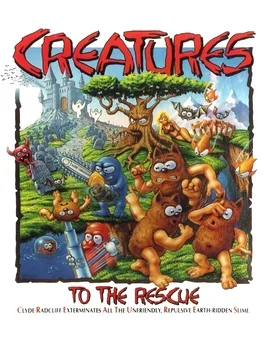
The inhabitants of the pretty but insignificant planet Blot decided to leave to find a trendier planet, and escape being called the Blotians, a most unhip name. Until they such a planet, they call themselves the Fuzzy Wuzzies. Their colony ship collides with an asteroid, and crash lands in the Pacific Ocean, near an unchartered island, which they colonise, calling it "The Hippest Place in The Known Universe". Unfortunately the island is also home to rather nasty demons, who can't stand the commotion caused by the happy Fuzzies, or their silly name for the island. The demons kidnap the Fuzzy Wuzzies by hosting a massive party, then capturing them in a net, and dragging them off to the torture chambers. The only Fuzzy not caught is Clyde Radcliff, who was already being sick in the bushes. He wakes up in the morning with a really bad headache, and fiery halitosis, and sets out to destroy the demons, and rescue his friends. The game consists of 3 levels, each made up of 3 of stages. The first two stages of each level are side scrolling platformers, where Clyde must destroy the enemies by firing at them, presumably using his halitosis. At the end of each of these stages, Clyde meets a witch, who can provide him with extra firing patterns, or upgrade those he has, in exchange for 'magic potion creatures' found during the stages.

Take to the streets or take to the skies. Because Action Fighter is the incredible, transformable combat vehicle. You start out on a customized cycle. Built with enough speed and power to jump over water and overtake enemies. Then, by finding the right parts along the way, you'll change your cycle into a supercharged, state-of-the-art sports car. Next, add two turbojets to make your car airborne. And take to the skies. Down hyped-up helicopters and jet spaceships from above. And no matter which vehicle you're manning- or who you're after- get ready to stand by for action!

Monty On the Run is a platform-style game featuring Monty Mole, a coal thief fleeing across Europe to escape the Intermole agency. Players navigate Monty through 80 screens representing European landmarks, using various movement techniques like super-leaps and ceiling suspension. The goal is to collect Eurocheques and plane tickets while avoiding hazards. The game incorporates unique elements such as drunkenness effects from wine bottles and aerial combat sequences. As the third main entry in the Monty Mole series, it builds upon the gameplay mechanics of its predecessors while introducing new challenges and environments.
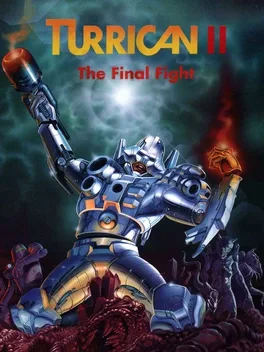
Turrican II: The Final Fight is a platformer/shooter as typically seen on consoles, but designed for home computers from the ground up. Its plot is - naturally - very simple: an evil mega-robot called The Machine attacks the United Planets Ship Avalon 1, slaughtering all who resist. All - except Bren McGuire, who manages to escape and slips into the experimental Turrican bionic armor. As Turrican, he strives to show The Machine who's the boss. Unlike other games of its type, this game contains three levels of horizontal shooter action in the spirit of R-Type or the developers' own Katakis. Six large worlds are to be explored, where you are basically free to go everywhere you want, since there is no automatic scrolling and the levels are packed with hidden extra lives and weapons. All those levels are very different: the first one in the rock desert is pretty colorful with parallaxing rainbow background and happy music, while the following worlds get darker and darker.
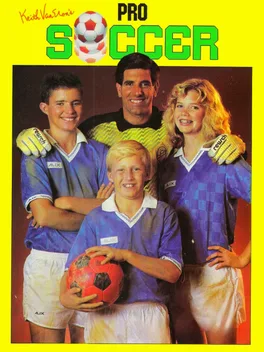
The game consists of two different soccer simulations, you can carry out a match in the stadium or indoors. The field is always shown from the top and scrolled softly into all directions. Different game modes make for diversity. Up to 15 players can enter their names and then compete with each other in a league. One can also take part in a World Cup, whereby the venue corresponds to the one of a real World Cup. The computer takes over the controls of as many teams as needed. A two-player friendly can be played head to head. The game offers features as "banana kick", "action replay" and weather. The original was developed by Sensible Software for the C64, Electronic Pencil Company were responsible for the Amiga and Atari ST versions.
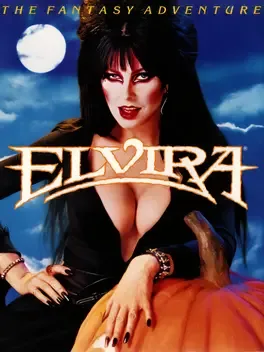
Elvira: Mistress of the Dark is a survival horror video game developed by Horrorsoft and released by Accolade in 1990 for the Amiga, Atari ST, Commodore 64 and MS-DOS computers. It was Horrorsoft's second published game after 1989's Personal Nightmare and stars the actress Cassandra Peterson as her character Elvira the witch. In Mistress of the Dark, Elvira is held captive by dark forces in the castle of her ancestor Queen Emelda. The player's character in the castle to rescue Elvira and prevent the imminent return of the evil long-dead evil sorceress. The well-received game was followed by Elvira II: The Jaws of Cerberus in 1991 and the spiritual successor Waxworks in 1992. Contents
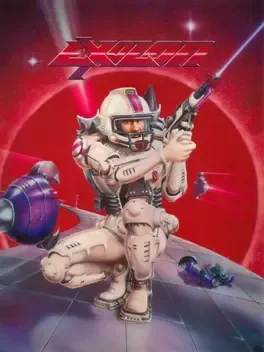
Exolon is a classic side-scrolling action game developed by Hewson Consultants and released in 1987 for various 8-bit home computer platforms. Players control Vitorc, a space marine equipped with an armored exoskeleton suit, as he navigates through 125 screens of hostile alien terrain. The game's core gameplay revolves around precise shooting, strategic grenade use, and skillful maneuvering to overcome a relentless array of enemies and environmental hazards. Known for its high difficulty level, Exolon challenges players with fast-paced action that demands quick reflexes and careful planning. What sets Exolon apart is its distinctive visual style, which pushed the graphical boundaries of 8-bit computers in its era. The game features detailed sprites and backgrounds that create a unique sci-fi atmosphere, complemented by a pulsing soundtrack that enhances the immersive experience. This combination of challenging gameplay, striking visuals, and atmospheric audio helped Exolon stand out in the late 1980s gaming landscape, earning it a cult following among retro gaming enthusiasts. Despite its simple premise, the game's intense action and memorable presentation have secured its place as a notable title in the history of side-scrolling shooters.
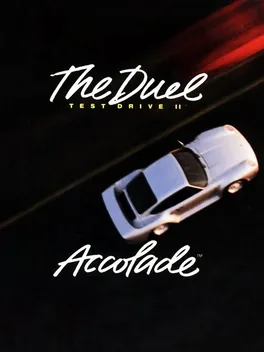
The Duel: Test Drive II is a cross-platform racing game developed by Distinctive Software and published by Accolade in 1989. It is the second entry in the Test Drive series of video games.
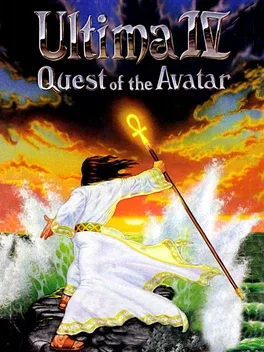
Following the defeat of the evil triad in the previous three Ultima games, the world of Sosaria changed beyond recognition: continents rose and sank, and new cities were built, heralding the advent of a different civilization. Unified by the reign of the benevolent monarch Lord British, the new world was renamed Britannia. Lord British wished to base people's well-being on the ethical principles of Truth, Love, and Courage, proclaiming the Eight Virtues (Honesty, Compassion, Valor, Justice, Sacrifice, Honor, Spirituality, and Humility) as the ideal everyone should strive for. The person who could accomplish full understanding and realization of these virtues would serve as a spiritual leader and a moral example for the inhabitants of Britannia; he alone would be able to obtain holy artifacts, descend into the Stygian Abyss, and access the Codex of Ultimate Wisdom. This person is the Avatar. The fourth game in the Ultima series features an improved game engine, with color graphics and enhanced character interaction: the player can have conversations with non-playable characters by typing names of various topics. However, the main difference between Ultima IV and its predecessors in the series (as well as other role-playing games) lies in the game's objectives and the ways to fulfill them. Instead of building up a character by any means possible in order to face a villain in the end of the game, in Ultima IV the player is trying to become the Avatar, a role model for people. This means upholding the Eight Virtues, basically trying to become a better person. Making morally conscious decisions and helping other people is not done expecting a material reward, but because it is the actual goal of the game and the main focus of its gameplay. The game frowns on behavior typical of most other RPGs, such as backstabbing fleeing enemies or picking up everything that isn't nailed down even if it does not belong to the protagonist. This different approach established the game's reputation as the first "true" Ultima, influencing the design philosophy of later installments and the overall spirit of the series. Character creation is done by choosing responses to morally ambiguous questions. Each of the Eight Virtues corresponds to a character class; by determining the player's personal priorities in the virtues, the game assigns a class and a starting location for the Avatar. After emerging in Britannia, the player is free to explore it in various ways (on foot, moongate teleportation, on horseback, by ship, etc.). Certain items must be collected in any order to enter the Stygian Abyss and complete the game. The Avatar also has to reach the highest level in all virtues. This is achieved by various means: donating blood increases Sacrifice, not fleeing from combat increases Valor, etc. The process, however, is not irreversible: should the Avatar overpay a blind seller, he gains Compassion points; should he, on the other hand, cheat the seller by underpaying, his level in several virtues would decrease. These unorthodox features of the game co-exist with plenty of traditional RPG elements, such as dungeons to explore and hostile monsters to kill. Enemies are encountered on the world map as well as in dungeons; combat takes place on separate top-down screens, allowing player-controlled and enemy parties freely move on them. Characters accumulate experience points and level up, gaining higher amount of hit points and access to stronger magic spells. Like in the previous installments of the series, world map, town exploration and combat are presented from a top-down view, while the dungeons are pseudo-3D and are explored from first-person perspective. Ultima IV also introduces several new gameplay features to the series and role-playing games in general. A number of initially non-playable characters living in various areas of the game world are able to to join the party and fight alongside the hero, replacing traditional player-generated characters or mercenaries and adventurers available only in special locations. Additional new elements include buying and combining reagents in order to cast spells, puzzle rooms in dungeons, and others. The FM Towns version, while identical to the others in gameplay, introduces upgraded graphics similar to those used in next installment of the series.
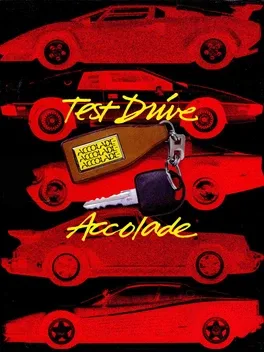
After you choose a car, you have to drive as fast as possible without crash and without getting caught by the cops. You are equipped with the radar detector so you are informed about the approaching trouble.
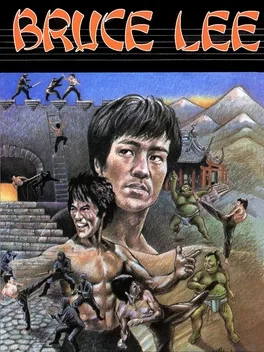
Bruce Lee is a video game designed by Ron J. Fortier, with graphics by Kelly Day and music by John A. Fitzpatrick. It was originally developed for the Atari 8-bit family and published in 1984 by Datasoft, along with a port for the Commodore 64. The game was converted to the ZX Spectrum and Amstrad CPC and published by U.S. Gold in the same year. An MSX version was published in 1985 by Comptiq. Bruce Lee is a platform game/beat 'em up hybrid, in which the player controls Bruce Lee.
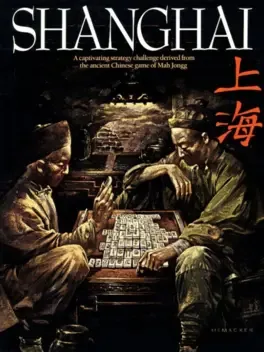
Shanghai is a computerized version of mahjong solitaire. After winning a game, the tiles reveal the three-dimensional blinking eye of a dragon behind the game screen. The Macintosh and Sega Master System version shows an animated dragon spitting fire.
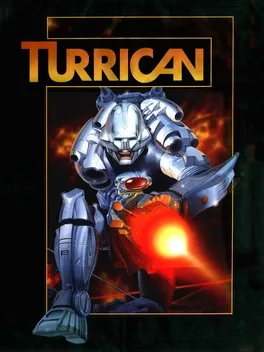
Turrican is a 1990 video game programmed and designed by Manfred Trenz. It was first developed for the Commodore 64 by Rainbow Arts, but was ported to other systems later. In addition to concept design and character creation, Trenz personally programmed Turrican on the Commodore 64. A sequel, Turrican II, followed 1991 for the Commodore 64 and other platforms.
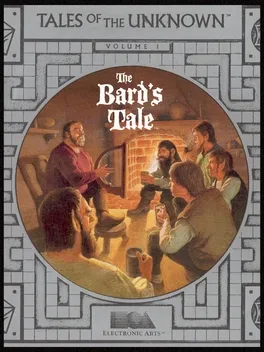
Tales of the Unknown: Volume I, better known as "The Bard's Tale", is an RPG developed by Interplay Productions in 1985 originally for the Apple II. It was quickly ported to numerous other platforms and became widely successful. This was partly because it incorporated unprecedented 3D graphic design, featuring partly animated character portraits and engaging gameplay. It also helped that the game was available on the Commodore 64-the most successful game console at the time, whereas the main competitor-the Ultima series, was not.
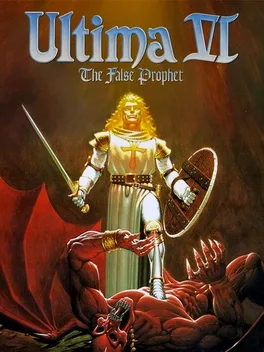
Ultima VI sees the player return to Britannia, at war with a race of gargoyles from another land, struggling to stop a prophecy from ending their race. The player must help defend Britannia against these gargoyles, and ultimately discover the secrets about both lands and its peoples.
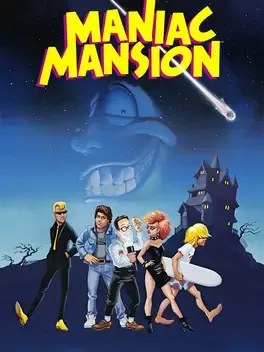
Maniac Mansion is a 1987 graphic adventure video game developed and published by Lucasfilm Games. It follows teenage protagonist Dave Miller as he attempts to rescue his girlfriend from a mad scientist, whose mind has been enslaved by a sentient meteor. The player uses a point-and-click interface to guide Dave and two of his six playable friends through the scientist's mansion while solving puzzles and avoiding dangers. Gameplay is nonlinear, and the game must be completed in different ways based on the player's choice of characters. Initially released for the Commodore 64 and Apple II, Maniac Mansion was Lucasfilm Games' first self-published product.
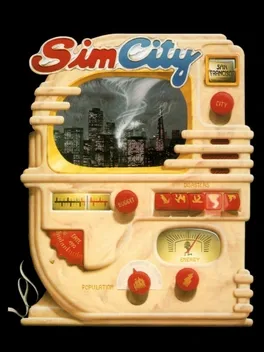
SimCity, later renamed SimCity Classic, is a city-building simulation video game, first released on February 2, 1989, and designed by Will Wright for the Macintosh computer. SimCity was Maxis's second product, which has since been ported into various personal computers and game consoles, and spawned several sequels including SimCity 2000 in 1993, SimCity 3000 in 1999, SimCity 4 in 2003, SimCity DS, SimCity Societies in 2007, and SimCity in 2013. Until the release of The Sims in 2000, the SimCity series was the best-selling line of computer games made by Maxis.
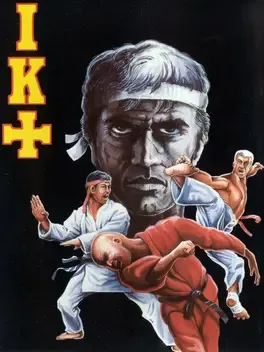
Call it a sequel... And you'll land up flat on your back. They called International Karate "the greatest Karate beat' em up yet" (Commodore User). And who are we to argue? But Archer Maclean has come up with a stunner: A third fighter. An amazing animated background. New moves (including double head-kick and a spectacular backflip). Re-mixed music by Rob Hubbard. And Balls!
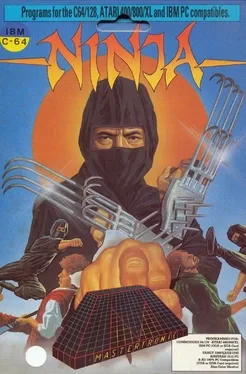
Ninja is a beat 'em up game. As a Ninja, the player attacks a fortress made of individual fixed screens which can be explored non-linearly.

Chuckie Egg is an action platformer featuring a turn-based multiplayer mode. As Hen-House Harry, the player must collect the twelve eggs positioned in each level, before a countdown timer reaches zero. In addition there are piles of seed which may be collected to increase points and stop the countdown timer for a while. The player starts with five lives, and an extra life is awarded every 10,000 points.
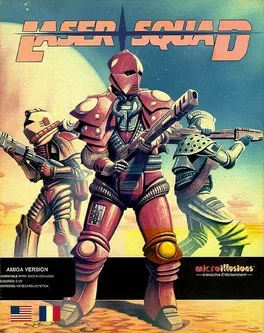
Laser Squad is a turn-based tactics war game where the player completes objectives such as rescue or retrieval operations, or simply eliminating all of the enemy by taking advantage of cover, squad level military tactics, and careful use of weaponry. The squad's team members are maneuvering around a map one at a time, taking actions such as move, turn, shoot, pick up and so on that use up the unit's action points. More heavily laden units may tire more easily, and may have to rest to avoid running out of action points more quickly in subsequent turns. Morale also plays a factor; a unit witnessing the deaths of his teammates can panic and run out of the player's control. Including the expansion pack, there are seven scenarios in total, each one with its own difficulty settings and squad allocation Laser Squad originally came with five mission scenarios, with an expansion pack released for the 8-bit versions, containing a further two scenarios. Reaction from gaming magazines was positive, gaining it high review rating and several accolades. The legacy of the game can be seen in other titles like the X-COM series, especially the acclaimed UFO: Enemy Unknown which was also created by Julian Gollop and was initially conceived as a sequel to Laser Squad
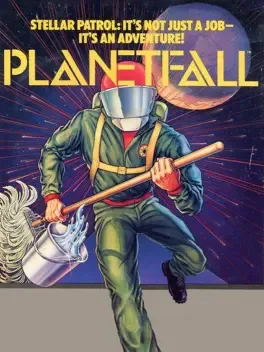
Planetfall is a science fiction interactive fiction computer game written by Steve Meretzky, and the eighth title published by Infocom in 1983. Like most Infocom games, thanks to the portable Z-machine, it was released for several platforms simultaneously. The original release included versions for the PC (both as a booter and for DOS) and Apple II. The Atari ST and Commodore 64 versions were released in 1985. A version for CP/M was also released. Although Planetfall was Meretzky's first title, it proved one of his most popular works and a best-seller for Infocom; it was one of five top-selling titles to be re-released in Solid Gold versions including in-game hints. Planetfall utilizes the Z-machine originally developed for the Zork franchise and was added as a bonus to the "Zork Anthology". The word planetfall is a portmanteau of planet and landfall, and occasionally used in science fiction to that effect. The book Planetfall written by Arthur Byron Cover, uses the game image on the cover, and is marketed "In the bestselling tradition of THE HITCHHIKER'S GUIDE TO THE GALAXY.[2] A sequel, Stationfall, was released in 1987. Planetfall teleports you 12,000 years into an outrageous future. You joined the Stellar Patrol to explore the galaxy, but all you've seen is the end of a mop - until your ship explodes and you're jettisoned onto a mysterious, deserted planet. Luckily, you have Floyd, a lovable multi-purpose robot with the personality of a mischievous 8-year-old. He's the ideal companion with whom to brave your new world, as you dare its dangers and uncover its secrets.

Saboteur! is the classic retro game hit made by Clive Townsend in 1985 for the ZX Spectrum 8-bit computer. In 1985 Saboteur! received the prestigious award "The Crash Smash" from Crash magazine and was high-rated with a 93% score. Now after 36 years MobileFabric in collaboration with Clive Townsend have prepared the special remastered version of Saboteur! for iOS devices. In the game you'll experience the original mission from 1985 version. Additionally the story will continue with new levels and enemies. Now you'll be able to know more about Saboteur and his dark and secret story.